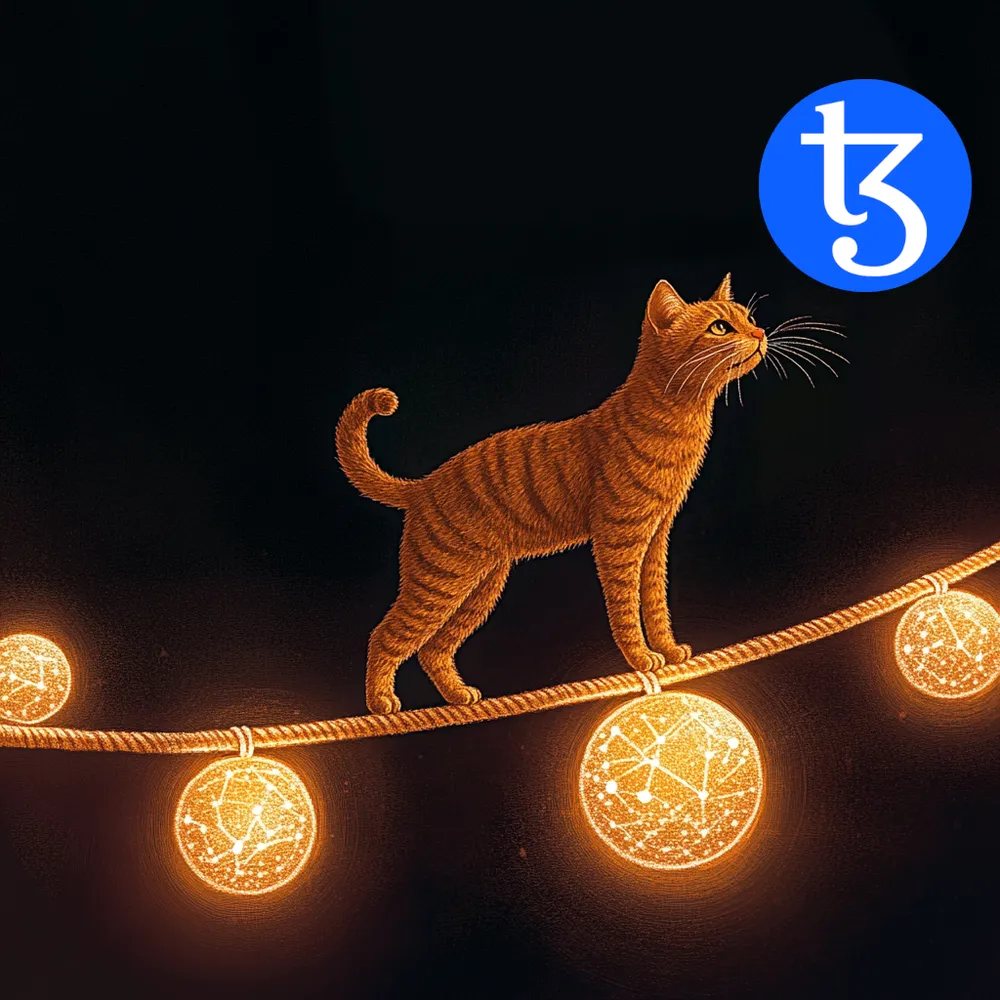Staking is a powerful way to earn rewards and support blockchain networks, but the details can vary significantly depending on the ecosystem. Tezos and Ethereum both offer staking, but their approaches, terminology, and mechanics are fundamentally different. Let’s break it down and clarify what sets Tezos staking apart.
Liquid Staking: Two Definitions
One of the most confusing terms in crypto is “liquid staking,” and it means very different things in the Ethereum and Tezos ecosystems:
1) Ethereum: Liquid Staking Derivatives (LSDs)

On Ethereum, “liquid staking” involves Liquid Staking Derivatives (LSDs)—IOU tokens like stETH issued by services such as Lido who provide a custodial staking service. These tokens represent your staked ETH and can be traded or used in DeFi while your actual ETH remains locked. However, LSDs often trade at a discount and require constant price tracking, adding a layer of complexity and risk. Additionally, as custody of the original Ethereum token is lost some countries may see this as a disposal and treat the transaction as a taxable event.
2) Tezos: Delegation as Liquid Staking

In Tezos, “liquid staking” simply means delegating your Tezos account to a baker (validator) without locking your XTZ tokens. You retain full control of your Tezos and can transfer or spend them anytime, while still earning rewards. There are no derivative tokens or complicated mechanisms—just straightforward participation in the network.
Tezos now has Locked Staking: Double the Rewards
With the Paris upgrade in June 2024, Tezos introduced Adaptive Issuance, which brought a new form of staking with double rewards. Immediately after delegating (choosing a baker), you can optionally stake your XTZ, locking your tokens for 11 days in exchange for twice the rewards compared to delegation alone.
Here’s how it works:
- Staked XTZ earns approximately:
Minus the baker's fee, however, this rate adjusts dynamically based on how many users stake, ensuring a balanced incentive structure.
To unstake, simply visit stake.tezos.com and initiate the unstake. After the 11-day lock period, you’ll need to visit stake.tezos.com again to finalise the transaction, regaining access to your funds.
This dual-layer approach—delegating first, then optionally staking—gives Tezos users the choice between liquidity and maximising their rewards.
Reward Frequency: What to Expect
Tezos staking rewards are determined by your choice of baker, with frequency tied to their size:
- Small Bakers:
Delegating and/or staking Rewards start approximately 10 days in the case of delegating and 6 days in the case of staking. In both cases rewards are distributed every 3 days. If staking, extra payouts occur whenever your baker produces a block. Choosing a small baker is ideal if you prefer less frequent payments and don't mind a bit of variance in rewards. It also helps decentralisation, giving your voting power to independent validators.
- Large Bakers:
Delegating and/or staking to a large baker results in more frequent but predictable payments. Your balance will increase several times per hour in addition to the regular payouts every 3 days. This frequency can make tracking rewards challenging.
While the frequency of payouts isn’t customisable, Tezos’ flexible delegation system lets you switch bakers to find a schedule that suits you.
Ethereum Staking: The Trade-Offs
Ethereum staking operates differently and comes with its own set of trade-offs:
- LSD Dependence: Most Ethereum staking relies on LSDs for liquidity, which means holding tokens that may not always match the value of ETH.
- Locking Periods: Directly staked ETH is locked until Ethereum’s unstaking mechanism is executed, and the timeline can be uncertain.
- Rewards: Ethereum staking rewards are stable but lack the frequent payout structure that Tezos offers.
Tax Considerations: The Jarrett Case
Staking rewards are a gray area for tax authorities worldwide. Some countries treat them as income, while others have no clear guidelines. Notably, Joshua and Jessica Jarrett in the U.S. filed a complaint asserting that cryptocurrency tokens created through staking are new property and should not be treated as income until they are sold. This case highlights the ongoing ambiguity surrounding staking rewards and their taxation.
For Tezos users, frequent payouts (especially with large bakers) could be seen as income events, potentially complicating tax reporting. It’s important to stay informed about your local tax regulations, as keeping detailed records of frequent payouts may not be practical for everyone.
Why Choose Tezos?
When comparing Tezos and Ethereum staking, Tezos offers clear advantages:
- Simplicity: Delegation is straightforward and doesn’t involve derivative tokens, smart contracts, or locking funds.
- Optionality: Staking provides an additional layer of rewards for those willing to lock their XTZ for a short period.
- Frequency: Tezos rewards are frequent, whether you choose a small or large baker.
- Innovation: Adaptive Issuance ensures rewards remain sustainable without inflating the supply unnecessarily.
Final Thoughts
Tezos and Ethereum staking reflect their underlying philosophies: Ethereum’s reliance on LSDs introduces complexity and risks, while Tezos prioritises simplicity, flexibility, and decentralisation. With Tezos, you’re not just staking—you’re part of an evolving ecosystem that’s redefining how rewards and participation should work in crypto.
Whether you’re looking to maximize your returns or support a decentralized network, Tezos staking provides a compelling alternative.
 Leo Treasure
Leo Treasure
